One small step… for maritime safety
The importance of the pilot ladder, by Bill Evans, Inspector of Marine Accidents.
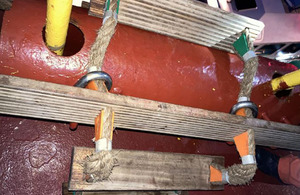
Top of a pilot ladder showing it was not adequately lit, was secured with shackles and stanchions were in excess of 800mm
The MAIB’s Annual Report published in June highlighted the issue of unsafe pilot ladders, a concern that has been regularly voiced by the industry. In 2021, the branch received almost 200 reports about substandard pilot ladders. Of those, 87% of the ladders were rigged incorrectly (top image) and the remainder were observed by the marine pilot as being materially defective (Figure 1). Fortunately, serious accidents have been rare, but the potential for injury and even loss of life clearly exists.

Close-up of broken rope on the right side of a pilot ladder. The ladder's identification plate is visible on the underside of the longest step
To mark this year’s Maritime Safety Week, our inspector Bill Evans has highlighted the key issues surrounding pilot ladders and his views on why they are so important.
What did you do before you became an MAIB Inspector?
Like many seafarers in the 1970s, I left school at 16 and joined the Merchant Navy as a deck officer, spending the next 8 years working all over the world on board a variety of ferries and dry cargo vessels. In the 1980s, I joined the Royal Navy and, during my 30 years’ service there, worked on every type of warship, from patrol boat to aircraft carrier. My last job before taking up my current role was to oversee the safe operation of five military ports, three in the UK and two overseas. It was while undertaking this role that I saw and successfully applied for the job of MAIB Inspector; I started work here in 2017.
Why is improving pilot ladder safety so important?
Marine pilots play a critical role in the safe operation of any harbour, where they guide almost every vessel in and out of the port. However, while the size and technological complexity of ships has increased, marine pilots still embark and disembark moving vessels by using a rope pilot ladder. The pilot transfer is a hazardous operation, so it is absolutely essential that these ladders are correctly rigged and their use properly supervised by the crew.
What are the things you should look out for when inspecting the safety of a pilot ladder?
The crew must inspect the pilot ladder before and after its use to verify that it is in good condition:
-
ensure the ladder is in date by checking the maker’s plate, normally found underneath one of the lower spreaders (Figure 1)
-
inspect the ladder’s side ropes to ensure that they are undamaged and in good condition
-
check the ladder’s steps, making sure they are undamaged, clean, evenly spaced and horizontal
-
replace the ladder if there are any signs of damage, no matter how small. Someone’s life may depend on it.
How do you rig a pilot ladder so it is safe?
To rig a pilot ladder correctly, it must be secured to strong points on the ship’s deck by a rope stopper attached to the ladder’s side ropes. Some of the reported incidents of substandard rigging have included the use of shackles or guardrails, which should never be used to secure the ladder. When a combination of accommodation and pilot ladder is being used, the lower platform of the accommodation ladder must be horizontal and secured to the ship’s side so that the pilot can safely transition between the two. On some larger container vessels, a trapdoor arrangement is used, in which case the pilot ladder must extend above the platform to ensure that the marine pilot can safely transfer. Finally, it is imperative that the pilot ladder is supervised by a qualified officer when in use, ready to take action if things go wrong. The ABP poster is an excellent guide as to what is acceptable and what is not (Figures 2a to d).
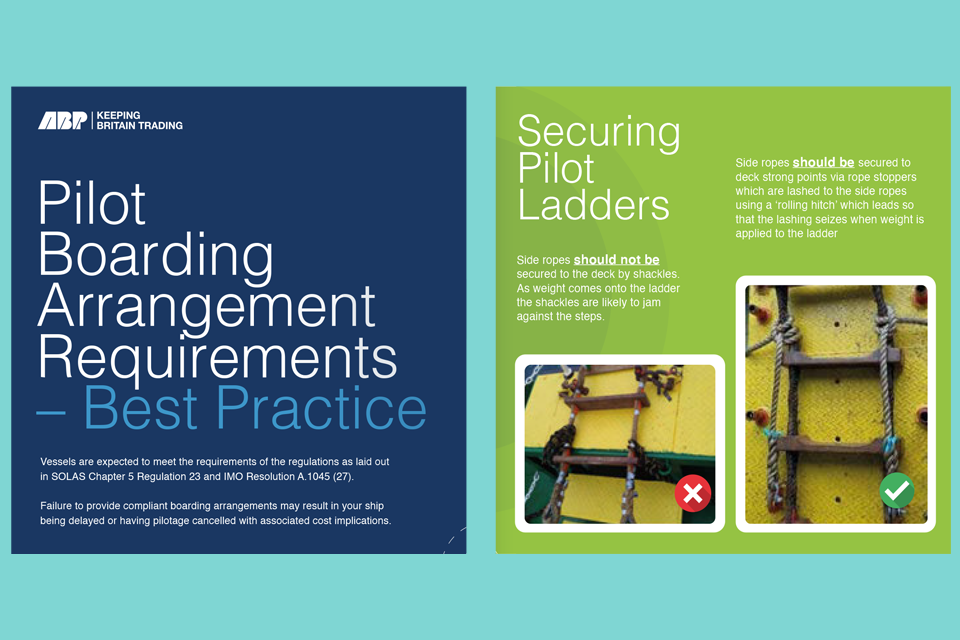
Introduction panel for from ABP's Pilot Boarding Arrangement Requirements - Best Practice poster next to a panel outlining do and don't guidance on securing pilot ladders
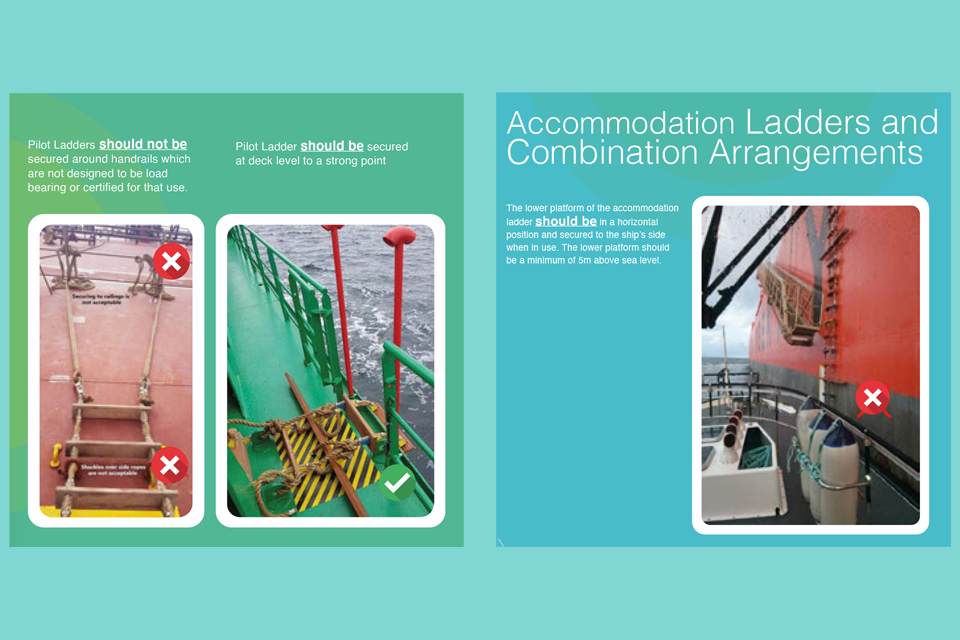
Continuing panel for do and don't guidance when securing pilot ladders next to a do and don't guidance panel for accommodation ladder and combination arrangements
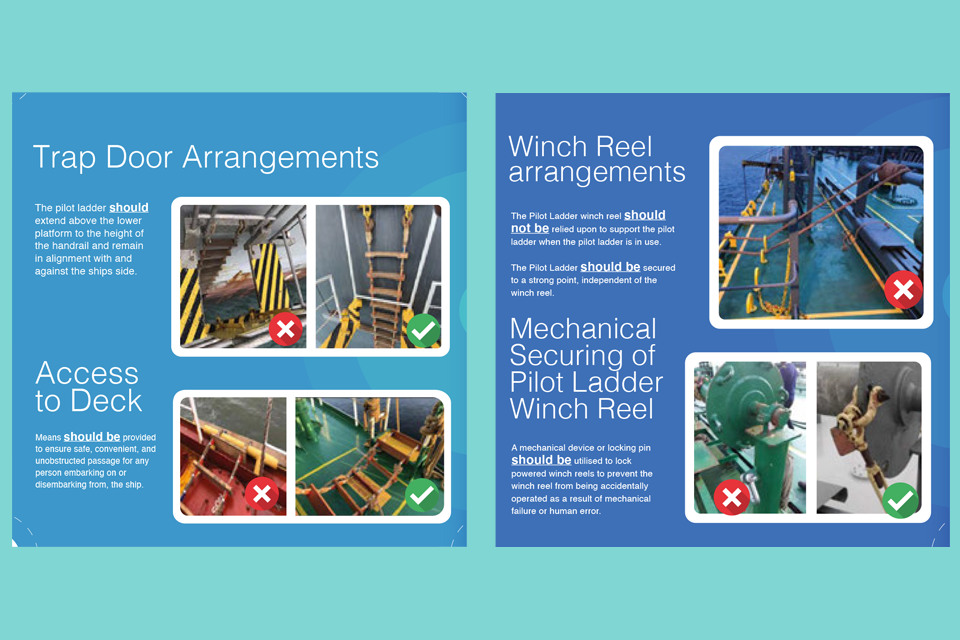
Panel outlining do and don't guidance on retrieval lines next to a panel for do and don't guidance on deck tongues and transfer arrangements
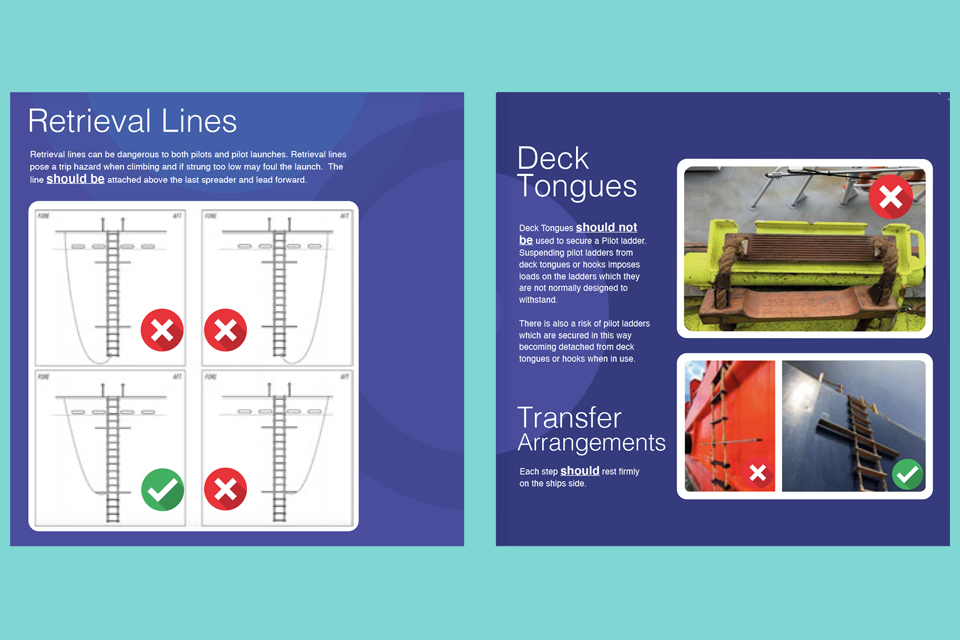
Panel showing do and don't guidance for retrieval lines and a panel for deck tongues and transfer arrangements
Overall, what is the key advice you would give to someone who has a pilot ladder?
The three most important points are:
- inspect the pilot ladder before and after use
- ensure it is well lit and rigged correctly
- supervise its use, with a suitably qualified officer at the embarkation point who is in direct communication with the bridge and has lifesaving appliances close at hand, ready to respond if something goes wrong.
Media enquiries (telephone only)
Media enquiries during office hours 01932 440015
Media enquiries out of hours 0300 7777878